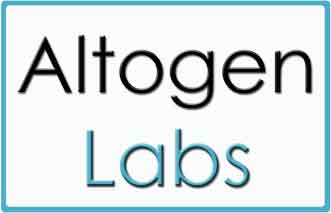A number of commercial bioremediation products were recently developed. Most bioremediation products are nutrient-based additives or non-specific microbial cultures which lack efficiency in field tests and applications. Bioremediation companies are currently working to develop a superior microbiology systems (Altogen Labs products 322075 and 635822) to improve microbial culture effectiveness and profit in the oil clean-up business.
- Remediation Bio Reagent, 1 kg [for 1,000 square meters treatment]
- Please contact orders@soil-bio-remediation.com for bulk reagent quote
Oil-degrading bacteria, which occur naturally in the environment, are of particular interest to bioremediation companies and scientists because of the positive impact of these bacteria on remediating oil spills in the planet’s oceans.
Contamination of the earth’s oceans by oil can be both man-made and naturally occurring. Each year, some 250 million liters of petroleum enter the marine environment from natural seepage. These leaks from the ocean floor contain aromatic compounds that are toxic to most life forms and can cause major ecological insults. However, despite its toxicity to most organisms, a considerable percentage of petroleum entering marine systems is eliminated by the hydrocarbon-degrading activities of various microbial communities, in particular, by a recently discovered group of microbes known as hydrocarbonoclastic bacteria (HCB). Of this group, the bacterium Alcanivorax borkumensis was the first HCB to have its genome sequenced by scientists and is now the subject of study by researchers around the world. Alkanes, which are the saturated hydrocarbons upon which A. borkumensis feeds, are the petroleum degradation products that arise from the process of microbial catabolism.
There are oil-degrading bacteria in every ocean from the Antarctic to the Arctic, and their effectiveness varies depending upon depth and temperature. Adaptation by communities of bacteria is more efficacious in dealing with particular spills, due to their presence at existing depths and temperatures, than a so-called “superbug” because this microbe is in competition with the bacterial community that has adapted to the environment.
Just as automobiles use gasoline for fuel, these marine-dwelling bacteria use hydrocarbons as fuel, emitting the greenhouse gas carbon dioxide (CO2) as a result. In essence, the microbes break down the ring structures of the hydrocarbons in seaborne oil using enzymes and oxygen present in the seawater. The result is ancient oil turned into modern-day bacterial biomass—microbial populations can grow exponentially in days.
These microbes, which have adapted to oil contamination from excessive marine traffic and small, daily spills in the ocean, fluctuate in number, depending upon the quantity of oil in the water. According to recent research, this particular bacterium will multiply to such vast numbers in the presence of oil that they provide natural mitigation of pollution in depths and at temperatures that were previously unknown. Several mechanisms have been proposed for this natural mitigation, including the bacterial generation of biosurfactants (amphiphilic, organic compounds that are produced in nature) to accelerate oil dispersion and remediation by attracting both oil and water to reduce the surface tension between these two substances, facilitating the breakdown and dispersal of the oil.
Since the capping of the Deepwater Horizon well in mid-July 2010, many questions have been raised about the causes and effects of this event, but none have been more interesting than “Where did all that oil go?”
According to Terry Hazen, senior scientist and head of the Ecology Department at the Center for Environmental Biotechnology, part of the Microbial Communities Department of the Joint BioEnergy Institute at the Lawrence Berkeley National Laboratory, much of it has been consumed by naturally occurring bacteria deep below the ocean’s surface. Data come from more than 200 samples collected between May 25 and June 2, 2010 from a plume of oil that extended at least 10 miles past the wellhead (the same plume that Camilli and colleagues announced last week). The Berkeley Lab team used DNA microchips to study the genes of the bacteria inside the oil plume, and they found a wide variety of hydrocarbon degraders. The chip helped the team identify new bacterial species.
While the first responders to ocean oil spills are generally the Coast Guard and concerned corporate assets associated with the event, larger federal responses to such events fall primarily to these agencies:
Federal Emergency Management Agency (FEMA)
United States Geological Survey (USGS)
Environmental Protection Agency (EPA)
Links to commercially available bioremediation products and services:

Altogen Labs: Bioremediation
Bioremediation Products and Services
Oil-degrading Microorganisms (Bacteria)
